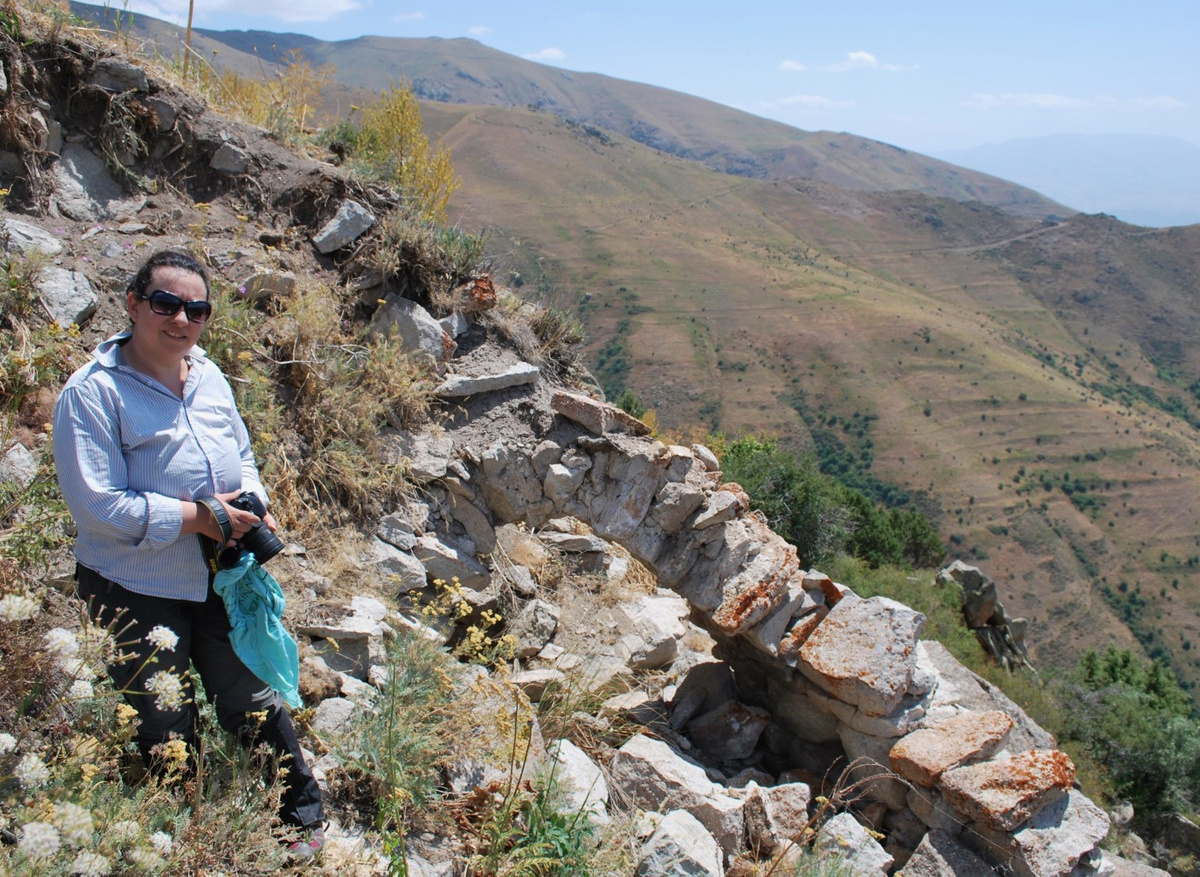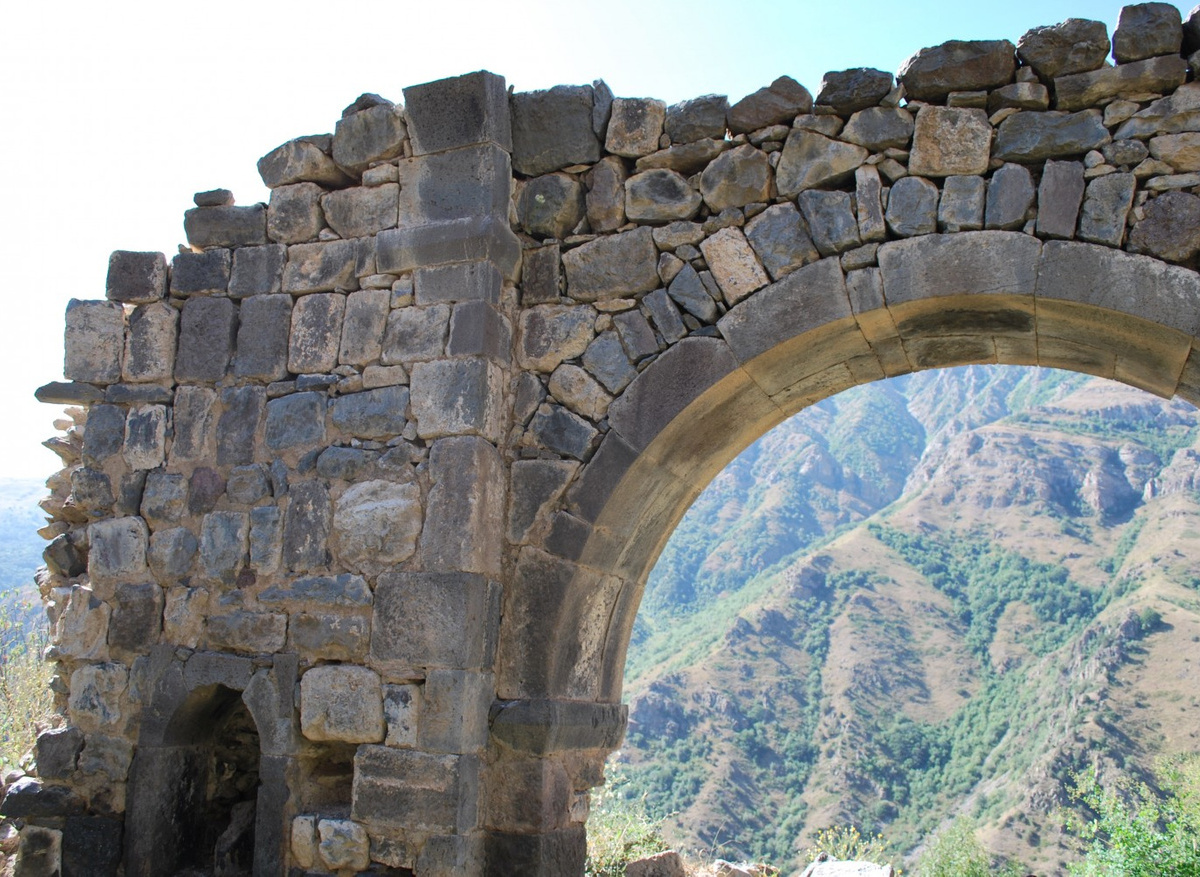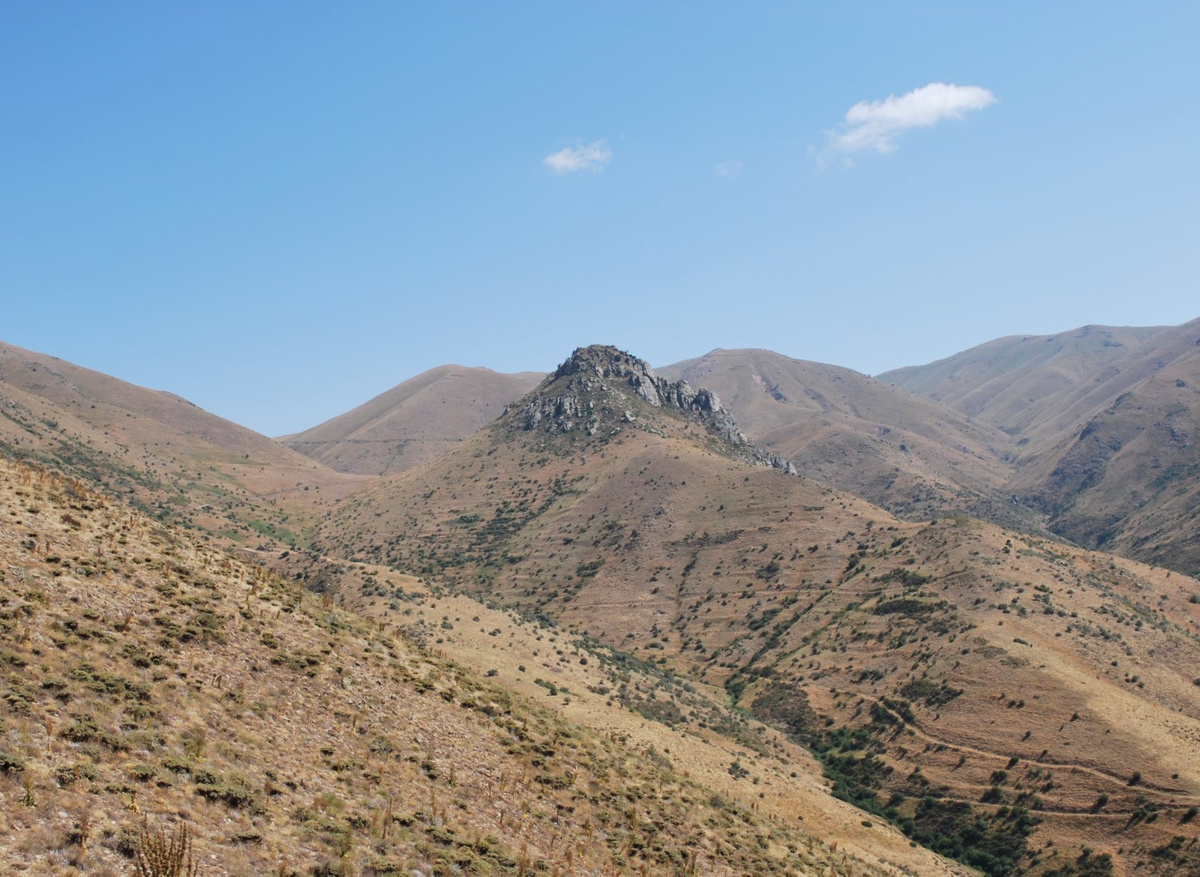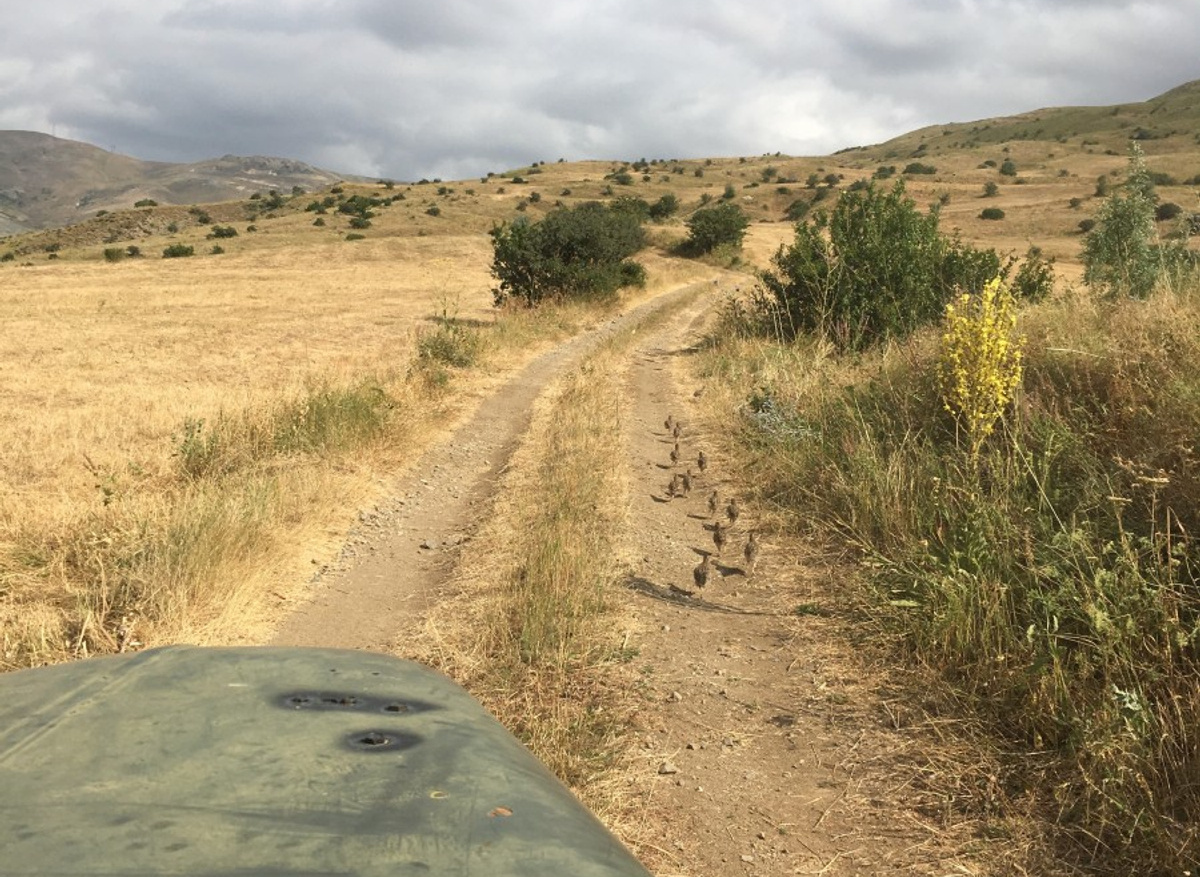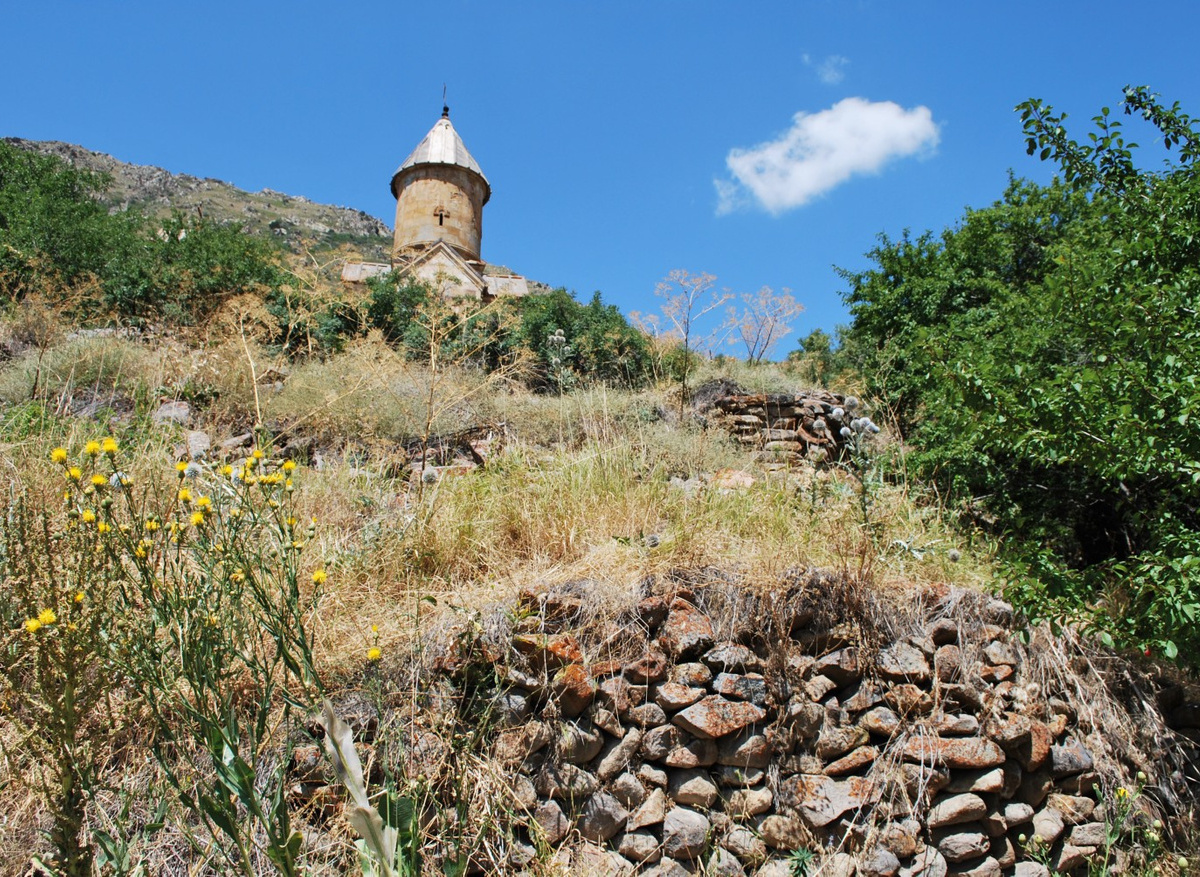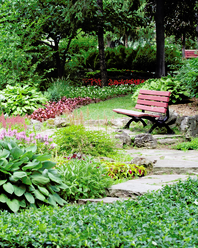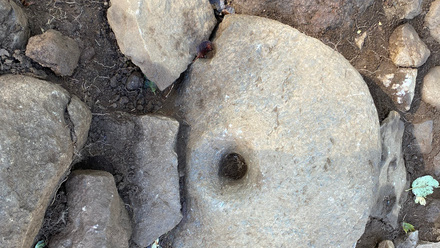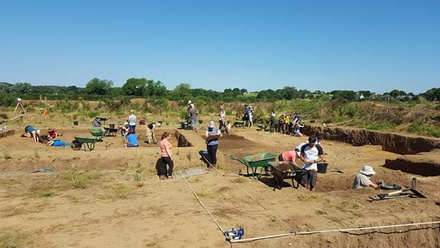On any given day of work on the Vayots Dzor Silk Road Survey (VDSRS) archaeological project, we wake up with the chickens. Breakfast is crucial for a day out walking canyon trails and scaling hills, so the team meets around the breakfast table for coffee, fresh bread and local eggs-- that is, if we can get a seat!
Our project home is the region of Vayots Dzor, in south-central Armenia. During the 12th-15th centuries, Vayots Dzor was a central hub of medieval life, and was a conduit for travelers and traders on what we now call the Silk Road. Vayots Dzor is densely packed with archaeological sites, dating from the Chalcolithic to the 20th century. A central aspect of our ongoing work is to explore this rich landscape, recording sites and features and collecting surface materials to enhance our understanding of this amazing medieval place.
Packed into a Soviet-era Vilus (the packhorse of archaeology in the former USSR) we set out and follow old maps, local directions and some hefty intuition between villages, recording sites--- and scaring up local wildlife-- as we go.
Medieval archaeological sites in Vayots Dzor range from relict field systems, bridges and caravan inns (caravanserais) to hilltop fortresses. Vayots Dzor is most famous for the beautiful churches and monasteries built under the patronage of the Orbelyan family and their contemporaries (such as the Proshyans, who endowed Spitakavor, shown below). These monumental sites are both critical features in our archaeological landscape, as well as being central to modern cultural memory and heritage tourism in Armenia. In the course of our surveys we encounter wedding parties and family picnics as well as local villagers and shepherds; we are frequently reminded that the places we research are part of a living landscape that is constantly being re-imagined.
Several times the course of a day we will climb out of the canyons and climb one of the many steep-sided hills which were used during the middle ages as the sites of fortresses, remote monasteries and settlements. Some of the fortified sites-- like Proshaberd, pictured below, had eagle’s-eye views of the networks of roads which crisscrossed Vayots Dzor in the medieval period, linking the Caspian and Black Seas, and the cities of Central Asia, Iran, Rus and the Mediterranean.
It’s such a thrill to trace the course of medieval walls and towers, and to look down over the valleys below--as well as on the traces of settlements which lined the slopes of these now isolated-looking fortresses. And the slopes are fantastic places to systematically collect pottery and glass artifacts dating to the medieval occupation of these places.
The end of the day is spent washing these surface collections back at the house, and laying them out to dry in the sun. The VDSRS has collected materials from a broad web of sites across the region; we are in the process of developing our understanding of pottery made and used across Vayots Dzor, in collaboration with the Yeghegnadzor Regional Museum. In addition to learning about the daily lives of people living on the hill slopes and valley floors, we can see how local cultures were situated within much broader tastes in the materiality of cooking and eating.
Imaginaries of the medieval Silk Road continue to shape and situate the local landscape of Vayots Dzor in relation to wider worlds. As the VDSRS relaxes in the cool of the evening after a long hot day, we frequently find ourselves drinking one of the locally made wines, including Hin Kamurj (Old Bridge), named after a 13th century bridge over the Arpa river, right in the heart of our survey region.

